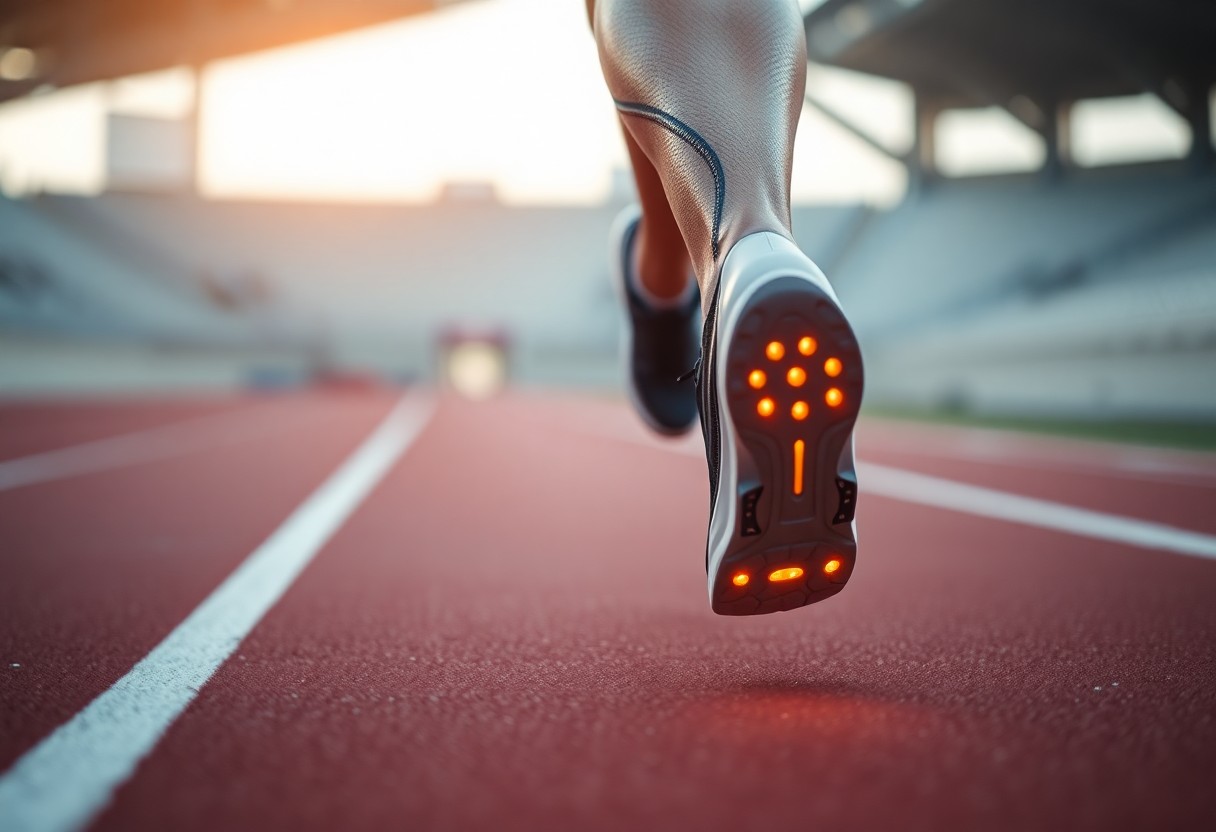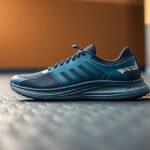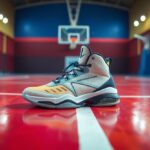
Dive into the revolutionary advancements in running footwear technology that have reshaped the performance optimization landscape for endurance athletes. These innovations are not just trends; they are game-changers in how we approach athletic performance.
The realm of performance optimization in endurance running has undergone a significant transformation thanks to advanced footwear technology. This cutting-edge technology presents unparalleled opportunities for athletes to unlock their full potential. You’ll learn how innovative shoe designs can significantly lower your metabolic expenditure and enhance your running economy. By incorporating carbon fiber plates and state-of-the-art midsole materials, these shoes boast remarkable energy return mechanisms that can reduce your oxygen consumption by as much as 4%. Whether you’re competing at a professional level or are a passionate amateur, comprehending these biomechanical advancements empowers you to make informed choices regarding your running gear and could enhance your race times.
 Continue reading to delve deeper into the mechanics of running footwear that promise to elevate your performance:
Continue reading to delve deeper into the mechanics of running footwear that promise to elevate your performance:
Unlocking the Mechanics of Energy Return in Advanced Running Shoes
Advanced running shoe technology employs intricate biomechanical principles to optimize energy transfer during locomotion. The use of innovative design elements works in harmony to minimize metabolic expenditure, creating a sophisticated system that enhances running efficiency through carefully engineered materials and geometrical configurations. By concentrating on the mechanics of energy return, these shoes provide runners with a substantial edge in both performance and stamina, enabling longer runs with less fatigue.
Analyzing the Curvature Dynamics of Carbon Fiber Plates
Carbon fiber plates employ precise geometric engineering to effectively redirect kinetic energy throughout the running motion. Optimal curvature angles between 12°-15° facilitate maximum energy storage and return, with finite element modeling showcasing up to 93% energy return efficiency in prototype designs. These meticulously engineered plates function like a spring, decreasing muscular effort during toe-off phases. This allows runners to conserve energy over extended distances, resulting in enhanced endurance and overall performance.
Evaluating TPU vs. EVA Innovations in Midsoles
Material selection plays a pivotal role in determining shoe performance, with thermoplastic polyurethane (TPU) emerging as a leading midsole technology. Comparative analyses highlight TPU’s significant advantages in energy return and impact absorption, providing runners with improved biomechanical efficiency under various running conditions. The decision between TPU and EVA foam is critical for athletes aiming to optimize performance and minimize the risk of injuries during both training and competitive events.
| Energy Return | 18% higher in TPU |
| Oxygen Consumption Reduction | 2.4% lower with TPU |
A deeper exploration of midsole materials reveals intricate performance characteristics. TPU shows superior resilience when compared to traditional EVA foam, maintaining consistent mechanical properties over thousands of compression cycles. Runners benefit from more reliable energy return, reduced fatigue, and improved long-distance performance through advancements in material science, which can significantly influence their overall training outcomes and results in competitions.
| Impact Absorption | TPU absorbs 37% more force |
| Rebound Elasticity | 89% maintained across 50,000 cycles |
 Continue on as we investigate the effects of advanced footwear technology on metabolic efficiency:
Continue on as we investigate the effects of advanced footwear technology on metabolic efficiency:
Identifying Who Benefits from Advanced Footwear Technology in Metabolic Efficiency
The influence of advanced footwear technology varies significantly among runners. Gains in metabolic efficiency differ widely across demographic groups, with aspects such as gender, age, and individual biomechanics playing vital roles in enhancing performance. Research has uncovered nuanced patterns in metabolic response, indicating that the advantages of super shoes extend beyond simple performance metrics to include complex physiological adaptations that are unique to each runner’s biomechanical profile.
Gaining Insights into Gender-Specific Performance Enhancements
Female runners experience a 3.2% improvement in metabolic power compared to a 4.2% improvement in males, suggesting intricate neuromuscular adaptations. An analysis of pelvic kinematics reveals a 14% greater reduction in the hip adduction angle for females wearing advanced footwear, possibly explaining the subtle differences in metabolic benefits observed between genders. Recognizing these differences can help tailor training regimens and footwear selections to maximize performance advantages for each gender.
Understanding the Influence of Age on Performance and Endurance
Masters athletes aged 40 and above demonstrate a 2.8% greater reduction in oxygen cost when utilizing super shoes, likely compensating for diminished tendon elasticity. Analysis of tibial loading reveals a 12% cumulative stress reduction per kilometer in older runners, indicating potential benefits for injury prevention and performance sustainability. These findings underscore the significance of advanced footwear technology in prolonging the competitive lifespan of older athletes.
The advantages associated with age and advanced footwear technology extend far beyond mere performance metrics. Biomechanical studies show that older runners experience more pronounced adaptations due to compensatory mechanisms. Reduced tendon stiffness and altered muscle recruitment patterns work synergistically with shoe technology to create a distinctive profile of performance enhancement. More specifically, the energy return mechanism of the carbon plate appears to counteract age-related biomechanical inefficiencies, potentially extending competitive running careers by alleviating the physiological constraints typically faced by aging athletes.
Continue reading to uncover more about the implications of advanced footwear technology on injury risks:
Evaluating the Role of Running Footwear in Injury Risk Management
Advanced footwear technology brings forth complex biomechanical interactions that necessitate a thorough examination of potential injury risks. Runners must carefully weigh the trade-offs between performance enhancement and physiological adaptation. Longitudinal studies indicate subtle yet significant alterations in muscular recruitment patterns, joint loading, and proprioceptive feedback when transitioning to high-performance running shoes, highlighting the necessity for a balanced approach to training and recovery.
Investigating Injury Risks: The Consequences of Enhanced Performance
Biomechanical research reveals a 9% increase in Achilles tendon strain rates among users of super shoes during high-intensity training. Plantar pressure mapping indicates a 22% increase in forefoot loading compared to traditional trainers, particularly during challenging terrains such as downhill running. These findings suggest that while metabolic efficiency may improve, runners should implement targeted strength and adaptation protocols to mitigate potential injury risks and promote long-term athletic health.
Modifying Training Protocols for Optimal Gait Adaptation
Your biomechanical response to advanced footwear necessitates strategic modifications in your training regimen. Gait retraining is essential to optimize the unique energy return mechanisms of carbon-plated shoes. Runners need to focus on developing neuromuscular patterns that harmonize with the shoe’s biomechanical design, which may help reduce injury risk and maximize performance benefits.
Comprehensive strategies for gait adaptation involve multifaceted approaches to effectively integrate advanced footwear technology. Biomechanical analysis indicates that runners typically require about 6-8 weeks of progressive training to fully adjust to the unique mechanical properties of super shoes. This adaptation period should include targeted eccentric strengthening protocols, modified interval training techniques, and meticulous monitoring of lower limb biomechanics. Professional athletes and dedicated runners benefit from periodic 3D gait analysis to track subtle changes in their movement patterns, ensuring optimal integration of advanced footwear technology with individual biomechanical characteristics.
 Explore the future of footwear technology and its implications for runners:
Explore the future of footwear technology and its implications for runners:
Innovating the Future of Running Footwear Technology
Emerging technologies are set to redefine the design of running shoes, pushing the limits of biomechanical efficiency and performance optimization. Cutting-edge research is centered around personalized solutions that adapt to individual biomechanics, utilizing advanced materials, computational modeling, and integrated sensor technologies to develop a new generation of intelligent footwear tailored for elite athletes.
Transforming Footwear Design with 3D Printed Midsoles
Lattice structure optimization algorithms now enable precise variations in regional stiffness that align with individual foot pressure maps. Prototype testing has shown a 5.1% improvement in metabolic savings when compared to mass-produced models. Computational design enables unparalleled customization of midsole geometries, maximizing energy return and minimizing biomechanical stress. This pioneering approach ensures that every runner can achieve optimal performance tailored precisely to their unique physiological characteristics.
Integrating Smart Technology for Enhanced Performance Monitoring
Emerging sensor technologies are evolving running shoes into sophisticated performance tracking devices. Real-time ground reaction force feedback systems have the potential to lower oxygen costs by 1.9% through micro-adjustments in cadence, offering runners immediate biomechanical insights during both training and competition. These advancements are essential for athletes striving to refine their technique and performance metrics.
Advanced sensor integration signifies a monumental leap in performance monitoring technology. Multi-axis accelerometers, pressure-sensitive matrices, and embedded microprocessors now collect intricate biomechanical data with unprecedented accuracy. These smart systems analyze gait mechanics, impact forces, and energy expenditure in real-time, granting runners detailed insights into their movement patterns. Machine learning algorithms can predict potential injury risks, optimize training loads, and offer personalized technique modifications based on comprehensive movement analysis, thereby transforming running shoes from passive equipment into active tools for performance optimization.
Finally, deepen your understanding of the transformative landscape of advanced footwear technology in endurance running:
Embracing the Evolution of Advanced Footwear Technology
In summary, you have explored the transformative landscape of advanced footwear technology in endurance running. Your knowledge now includes how innovative design features such as carbon plates and high-performance midsole materials can drastically lower metabolic costs and enhance running efficiency. By leveraging scientific insights, you can recognize that these shoes offer far more than marginal gains—they signify a paradigm shift in athletic performance. Your investment in this technology could translate to improved running economy, reduced energy expenditure, and optimized biomechanical responses across various athletic demographics.
The Article Biomechanical Efficiency of Advanced Footwear Technology: Metabolic Cost Reduction and Performance Enhancement in Endurance Running appeared first on My Shoes Finder.
The Article Biomechanical Efficiency in Advanced Footwear for Runners Was Found On https://limitsofstrategy.com










No responses yet